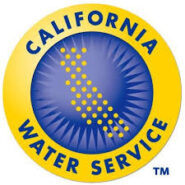Originating in 1933, the CVP was built in order to provide irrigation and municipal water to the Central Valley regions. Operated by the U.S. Bureau of Reclamation, the project s tores water in Northern California reservoirs and transports it to the Central Valley through a series of pumping facilities and canals. In Kern County, the Friant-Kern Canal is a branch of the CVP and originates at Miller ton Lake.
The CVP also produces hydroelectric power at some of its facilities, provides flood control and is a recreation destination in some areas. There are eight divisions of the project and ten corresponding units, many of which operate in conjunction, while others are independent of the rest of the network.
Approximately 13,000,000 acre-feet of water is s tored in 20 CVP reservoirs located in the foothills of the Sierra Nevada, the Klamath Mountains and the California Coast Ranges. Some 7.4 million acre-feet of water annually flows through CVP canals. Of that water, about 5 million acre-feet is used on about 2 million acres of irrigated farmland and 600,000 acre-feet is used for municipal cus tomer. About 800,000 acre-feet is released in to rivers and wetlands for environmental purposes.
CVP components, Shasta Lake and Trinity Lake are formed by a pair of dams in the mountains north of the Sacramen to Valley. Water from both of these lakes is sent down the Sacramen to River, which flows to the Sacramen to-San Joaquin Delta. Before it can flow on to San Francisco Bay and the Pacific Ocean, some of the water is diverted and transported to the Delta-Mendota Canal, which conveys water southwards through the San Joaquin Valley, supplying water to San Luis Reservoir (a SWP-shared facility) and the San Joaquin River at Mendota Pool. From these locations, canals carry the water to valley farms and rural communities.
For more information:
Central Valley Project (CVP) Water Districts in Kern County
Subsidence is a hot but ton issue for the Friant -Kern Canal. Learn more about subsidence issues here:Friant_Challenges





